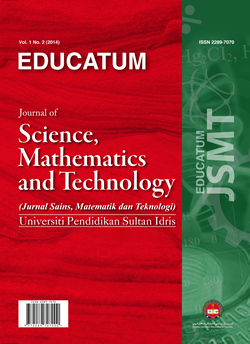Simple Harmonic Oscillation using Computer Simulation: Compilation of Experiments for Classroom Investigations
DOI:
https://doi.org/10.37134/ejsmt.vol10.1.9.2023Keywords:
physics education, physics teaching and learning, simple harmonic motion, computer simulations, experimental methodAbstract
The Simple Harmonic Oscillation (SHO) is a fundamental concept in physics, as it describes a large variety of phenomena that occur in nature, such as the motion of pendulums, mass-spring systems, and atoms. A thorough understanding of SHO can provide a good foundation for learning more advanced topics in physics, making it an essential topic for students to learn. Computer simulation technology provides an effective way to model SHO phenomena in the classroom. This technology allows students to explore SHO concepts visually and to replicate experiments that would be cumbersome or impossible to conduct otherwise. However, there are few compilations of SHO simulations appropriate for classroom use. This paper presented a compilation of SHO experiments that utilize computer simulation of PhET. The compiled experiments cover a broad range of SHO concepts, including proving the relationship of energy and amplitude, velocity and displacement, acceleration and displacement and types of damping. These experiments are suitable for classrooms of all levels and can be used to broaden and enrich students' understanding of SHO. Overall, the simulation-based experiments presented here offer a valuable resource for educators seeking to improve their students' understanding of SHO.
Downloads
References
Parnafes, O. (2010). When simple harmonic motion is not that simple: Managing epistemological complexity by using computer-based representations. Journal of Science Education and Technology, 19, 565-579.
West, B. J., Geneston, E. L., & Grigolini, P. (2008). Maximizing information exchange between complex networks. Physics Reports, 468(1-3), 1-99.
Kim, J. H., Park, S. T., Lee, H., Yuk, K. C., & Lee, H. (2001). Virtual reality simulations in physics education. Interactive Multimedia Electronic Journal of Computer-Enhanced Learning, 3(2), 1-7.
Forde, T. (2003). “When I am watching television I am not using any energy”‐an empirical study of junior science students’ intuitive concepts of energy. Irish Educational Studies, 22(3), 71-89.
Lamboume, R., & Durrani, A. (2019). Periodic motion. In The Physical Worls: Describing Motion (pp. 90-125). CRC Press.
Rizal, G., Sharma, P. R., Thinley, S., Subba, B., Chilaka, V. K., & Islam, K. D. (2022). Energy Analysis and the Determination of the Resonant Frequency of a Custom-Designed Scientific Oscillating Body. Journal of Advanced Research in Applied Sciences and Engineering Technology, 28(3), 39-48.
Boldo, S., Faissole, F., & Chapoutot, A. (2019). Round-off error and exceptional behavior analysis of explicit Runge-Kutta methods. IEEE Transactions on Computers, 69(12), 1745-1756.
Halliday, D., Resnick, R., & Krane, K. S. (2010). Physics, Volume 2. John Wiley & Sons.
Domínguez-García, J. L., Gomis-Bellmunt, O., Bianchi, F. D., & Sumper, A. (2012). Power oscillation damping supported by wind power: A review. Renewable and Sustainable Energy Reviews, 16(7), 4994-5006.
Chatzarakis, G. E., George Maria Selvam, A., Janagaraj, R., & Vignesh, D. (2022). Modelling Series RLC Circuit with Discrete Fractional Operator. In Advances in Electrical and Computer Technologies: Select Proceedings of ICAECT 2021 (pp. 1019-1032). Singapore: Springer Nature Singapore.
Heydari, A., & Li, L. (2021). Dependency of critical damping on various parameters of tapered bidirectional graded circular plates rested on Hetenyi medium. Proceedings of the Institution of Mechanical Engineers, Part C: Journal of Mechanical Engineering Science, 235(12), 2157-2179.
El-Dib, Y. O. (2022). Criteria of vibration control in delayed third-order critically damped Duffing oscillation. Archive of Applied Mechanics, 92(1), 1-19.
Sarwoto, T. A., Jatmiko, B., & Sudibyo, E. (2020). Development of online science teaching instrument based on scientific approach using PhET simulation to improve learning outcomes at elementary school. International Journal of Recent Educational Research, 1(2), 90-107.
Drysdale, T. D., Kelley, S., Scott, A. M., Dishon, V., Weightman, A., Lewis, R. J., & Watts, S. (2020). Opinion piece: non-traditional practical work for traditional campuses. Higher Education Pedagogies, 5(1), 210-222.
Haryadi, R., & Pujiastuti, H. (2020, April). PhET simulation software-based learning to improve science process skills. In Journal of Physics: Conference Series (Vol. 1521, No. 2, p. 022017). IOP Publishing.
Downloads
Published
How to Cite
Issue
Section
License
Copyright (c) 2023 Frank Angelo Pacala

This work is licensed under a Creative Commons Attribution-NonCommercial-ShareAlike 4.0 International License.





